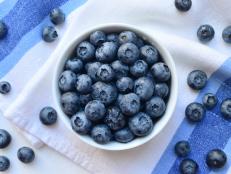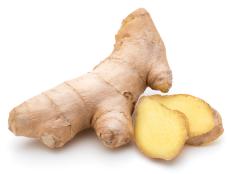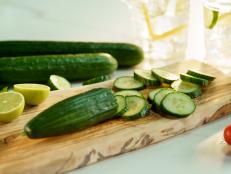How to Buy and Store Spring Produce


Artichokes
Fresh artichokes can seem daunting, but their bright flavor and meaty flesh is well worth the prep work involved. The crop peaks in the spring and fall, but artichokes are available year-round at the grocery store. While often eaten as a vegetable, the artichoke is actually a thistle bud and is a part of the sunflower family.
Buying Tips: Buy artichokes that have a tight leaf formation, a deep green color and are heavy for their size. The rounder the artichoke, the bigger the tender heart. Avoid artichokes that are drying, wilting or moldy.
Storage: Artichokes are best used on the day of purchase, but can be refrigerated unwashed for up to 4 days.
Preparation: Wash right before cooking. Prune the thorned tips of all the leaves and with kitchen shears. Slice off the tip of the artichoke and tear off small leaves near the base of the artichoke. Trim the stem to 1 inch or less.
If you’re not cooking the artichokes whole, cut them in half and scoop out the inedible fuzz in the center (called the “choke”) with a spoon. If you’re serving artichokes whole, you’ll need to scoop this out before eating the heart.
Spring Artichoke Recipes
- Artichoke and Goat Cheese Spread with French Bread Crostini
- Grilled Artichokes with Parsley and Garlic
- Salmon with Black Olive Vinaigrette and Braised Artichokes

Asparagus
The optimum season for asparagus is February to June. The slender, earliest stalks are the most tender, but you can enjoy this vegetable throughout the spring.
Buying tips: The tenderest stalks are apple green with purple tips. Choose firm, bright green stalks with tight tips.
Storage: While best cooked the same day, asparagus can be kept tightly wrapped in plastic in the refrigerator for 3 to 4 days. Alternately, you can store it standing up in abou an inch of water, covered with a plastic bag.
Preparation: Wash before using. If the lower stems are tough, peel them before cooking.
Spring Asparagus Recipes

Blueberries
These antioxidant-packed berries can easily be the star of spring desserts and breakfasts — but we also love them straight out of the carton.
Buying tips: Choose blueberries that are firm, uniform in size and indigo blue with a silvery tin.
Storage: Discard shriveled or moldy berries. Store the fruit in a moisture-proof container in a single layer atop a paper towel.
Preparation: Wash just before using.
Spring Blueberry Recipes
- Berries with Mascarpone and Meringue
- Blueberry Buckle
- Blueberry-Lemon Tart

VideoFocus
Carrots
A member of the parsley family, carrots have bright green foliage and a long, crispy edible root.
Buying Tips: The best carrots are young, slender, firm and smooth. Avoid carrots with cracks or any that are soft of withered. If buying with the greens, make sure the leaves are moist and green.
Storage: If you buy carrots with foliage, remove the greenery as soon as possible — it robs the carrots of moisture and vitamins and minerals. Store carrots in a plastic bag in the refrigerator. Keep them away from apples, which emit ethylene gas that can give the carrots a bitter taste.
Preparation: If you buy young, fresh carrots, simply rinse them before using. You'll need to peel and core older, bigger carrots. Limp carrots can be re-crisped in a bowl of ice water.
Spring Carrot Recipes
- Glazed Carrots
- Roasted Carrots and Beets with the Juiciest Pork Chops

Peas
Naturally sweet, crunchy fresh peas reach their peak in March, April, May and again from August to November.
Buying Tips: Choose peas with plump, unblemished bright green pods. Peas inside should be glossy, crunchy and sweet.
Storage: Peas begin the starch-to-sugar conversion immediately upon being picked, so it's important to buy them as fresh as possible. Refrigerate peas in pods in a plastic bag for no more than 2-3 day.
Preparation: Shell just before using.
Spring Pea Recipes
- Fettuccini Alfredo with Prosciutto and Peas
- Peas and Prosciutto

Rhubarb
Though rhubarb is technically a vegetable, the tart stalks are the perfect compliment to strawberries. It can also be paired well with other fruits and is delicious in savory dishes and sauces.
Buying tips: Choose crisp stalks that are brightly colored. If the leaves are attached, they should be fresh-looking and blemish free.
Storage: Fresh rhubarb is highly perishable, and should be refrigerated tightly wrapped in a plastic bag for up to 3 days.
Preparation: Wash and remove leaves before using.
Spring Rhubarb

Renee Comet, Renee Comet
Strawberries
These plump, juicy berries are at their peak from April through September, depending on your location.
Buying tips: Choose brightly colored, plump berries that still have their green caps and are uniform in size.
Storage: Store in a single layer on a paper towel in a moisture-proof container for 2 to 3 days.
Preparation: Wash and hull the strawberries just before eating.
Spring Strawberry Recipes






























































